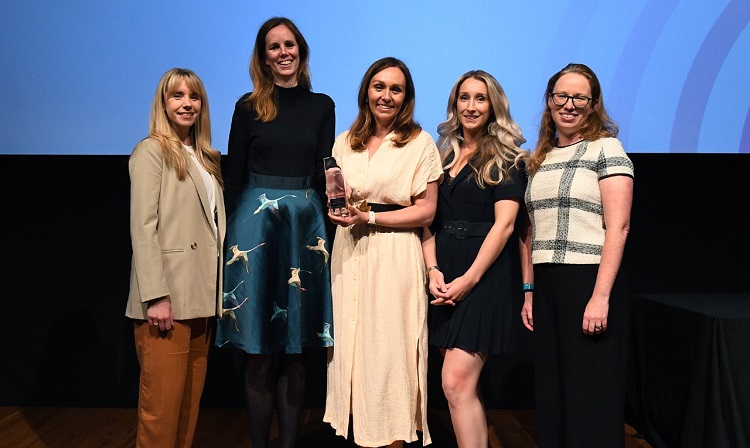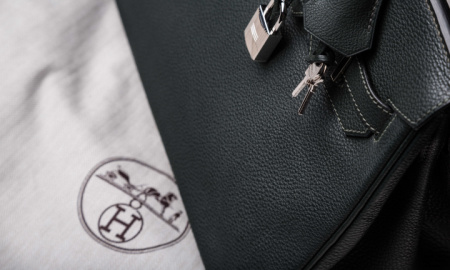Sign up for our free daily newsletter
YOUR PRIVACY - PLEASE READ CAREFULLY DATA PROTECTION STATEMENT
Below we explain how we will communicate with you. We set out how we use your data in our Privacy Policy.
Global City Media, and its associated brands will use the lawful basis of legitimate interests to use
the
contact details you have supplied to contact you regarding our publications, events, training,
reader
research, and other relevant information. We will always give you the option to opt out of our
marketing.
By clicking submit, you confirm that you understand and accept the Terms & Conditions and Privacy Policy
In January 2023, Wolf Greenfield's Robert Maldonado was at the helm of a team that achieved a significant trademark infringement victory on behalf of luxury brand Thom Browne, Inc. A jury in the US District Court for the Southern District of New York unanimously agreed that Browne did not infringe or dilute Adidas's three-stripe mark. Adidas had asked for approximately $8m in damages. Adidas was represented by a team led by Charles Henn at Kilpatrick Stockton.
The three stripes are a common feature in Adidas designs, while Browne's creations feature four horizontal, parallel stripes that round the sleeves of a garment. The conflict dates back 15 years. When Browne used a three-stripe pattern on a jacket in 2007, Adidas protested, saying it was too similar to their own. Browne then switched to a four-stripe pattern. Adidas did not contest that for years but when Browne filed a trademark application in the UK to register its Grosgrain ribbon, Adidas took notice.
Maldonado, an experienced IP litigator, gave his perspective on the matter in this Q&A.
If Adidas was unhappy with the similarity of Browne's stripes after the switch in 2007, why did they wait so long to bring this infringement action?
“That is a very good question that Adidas never really answered at trial. We don’t know exactly why Adidas waited over 10 years to reach out to Thom Browne after the switch from three bars to four bars. Adidas tried to argue that it did not know what Thom Browne was doing, but Thom Browne was an award-winning fashion designer during this time, and his collections were varied and included sweatpants since at least 2009. This gives all trademark holders a great reminder to actively monitor the marketplace. And, when enforcement action is taken, to follow up on their known infringers to protect their trademark rights. If they sleep on the wheel, it may become too late for them to enforce their trademarks. While there’s always a balancing act of cost versus benefit when deciding who to pursue, you have to keep your eye on the clock.”
With the understanding that most litigated matters settle before trial, were you surprised that this matter actually went to trial, much less to the jury?
“From the statistics perspective, it is rare that any litigated matters go through trial. Of all of the many cases that Adidas has brought in the past, this case stood apart from the rest. Others that they have sued have been direct competitors, often in the footwear and sneaker industry. Thom Browne was unlike any defendant Adidas has sued before. He is a high-end, luxury fashion designer, not a designer selling functional activewear. So how could anything he did harm Adidas? Why was this case so important for Adidas to bring it to trial? We remained perplexed throughout the trial. We genuinely believed that Thom Browne had not infringed Adidas’s trademark and that the jury would see this as the evidence was presented at trial. As you say, there are a lot of risks with putting the decision about infringement in the hands of a jury. Adidas decided to take that risk, and that decision has cost them.”
Click here to sign up to receive GLP's luxury law newsletter
Adidas has been successful in pursing trademark claims against competitors in the market for athletic footwear. You were quoted in media outlets as saying that going after a high-end luxury designer is a different sort of case. Why?
“Competition, price points and relevant consumers are important factors in assessing whether there is any likelihood of confusion. Typically, when we speak of confusion, we talk about whether a consumer is going to purchase an infringer’s products believing them to be made by the trademark owner – here, Adidas. In other words, is someone going to buy Thom Browne thinking it’s Adidas? The answer is no. Of course not. Because the parties are worlds apart and do not compete, confusion is not likely. It is extremely rare that a luxury designer would consciously try to associate itself with another brand, much less a brand that is sold at a price point that is 10 times to 20 times lower.”
In your arguments in court, you asserted that stripes constitute a typical design pattern. What, if anything, is the determining factor or factors in making a unique, protectable pattern for a brand, particularly for a luxury brand?
“Stripes, in general, are basic design elements used in fashion design. But a designer can use basic design elements in a unique and distinctive way so that consumers will associate that design with the designer or manufacturer. There really is no factor that will determine if a clothing design or pattern can function as a trademark. Even for designs that are not necessarily distinctive in their own right, consumer recognition and goodwill sometimes can be built over time through a designer’s consistent and widespread use of the design. In trademarks, this is known as ‘secondary meaning’. It is consumer recognition built over time. For luxury brands, I would say identify the message you want to convey, design a mark to convey that message and use it consistently. In this case, the message Thom Browne wanted to convey was a sporting sensibility, and he chose to convey that message through his distinctive use of four horizontal bands on the left side, which evokes a reference to varsity college sports.”
Having a solid strategy in place for policing the marketplace is of utmost importance in terms of combatting infringement.
Thom Browne was present in the courtroom throughout the trial. What effect do you think that had on the trial?
“We think that it had a big effect. Mr. Browne genuinely cared about this case and the potential impact this case would have on his employees and brand. We believe the jury could see his authentic personality through his presence in the courtroom, as well as through his testimony. This enabled the jurors to associate a brand they may have never heard of before, Thom Browne, with Thom Browne the man. It’s important in trials to personify the corporate parties as best you can.”
What can or should luxury brands learn or take away from this case?
“Luxury brands should understand the scope of protection that their trademarks provide and not reach too far in asserting them. Having an overreaching approach would not expand their trademark rights if that’s not how they use the mark in the marketplace. Second is that luxury brands should try to be as consistent as possible with their branding. While many marks will evolve over time based on a lot of external factors in society, try not to stray too far from your brand in terms of how it is presented. Of course, it is also important to have a good legal team to give guidance and advice on brand protection.”
What advice do you have for luxury brands as they plan to expand into new product areas, such as cosmetics and fragrances?
“It is common for fashion brands to expand into different product areas such as cosmetics and fragrances. In a way, those products may be considered related to apparel to the extent that the branding and messaging are aligned. I would advise to learn the marketplace and what others are doing in the new areas of expansion. For example, if your company has only sold apparel for the past five years, and you now want to sell perfume, take a look and see what other brands are doing in the perfume space. Look at the marks being used by others in that space so that you can take whatever steps are necessary to minimise any foreseeable risk of consumer confusion, if need be. If they are using the same mark from their clothing line to the new product area, don’t assume they have the rights based on the clothing. Lots of factors will come into play, such as whether the new product area is a zone of natural expansion for your business.”
As more luxury brands are entering collaborations, what advice do you have as far as protecting their intellectual property?
“I see a lot of luxury brands mixing and combining their marks with their collaborators’ marks. While such uses of marks most likely have minimum effect on the overall protection of their trademarks, such uses should be seasonal or strictly limited so that luxury brands do not lose control over their trademarks. As mentioned before, consistency in trademark uses is fundamental in protecting and strengthening their trademark rights.”
On a broader level, and in the current marketplace, what are your top concerns regarding infringement for luxury brands?
“Counterfeiting continues to be a major concern for luxury brands. There are many measures they can take to combat against counterfeiters. I am seeing more and more luxury brands utilising AI and blockchain technology in protecting their IP rights. Another area of infringement for luxury brands involves the sale of NFTs that incorporate a brand name or image. We saw that in the recent Hermes case, in which an NFT manufacturer was found liable to infringing the Hermes brand. Having a solid strategy in place for policing the marketplace is of utmost importance in terms of combatting infringement.”
You have been an IP litigator for a very long time. If you weren't in this field, what would you be doing?
“That’s hard to say. I’ve been doing this for 30 years now. But my original motivation to attend law school was social justice. So perhaps I would have ended up practicing in that field.”
Wolf Greenfield counsel Rob Maldonado focuses his practice on intellectual property litigation, including patent, trademark, copyright, false advertising and unfair competition matters in federal court. He manages extensive patent and trademark portfolios for his clients. He assists his clients in obtaining trademark, copyright, and patent protection, including developing IP protection and enforcement strategies. He can be reached at [email protected].
Email your news and story ideas to: [email protected]










